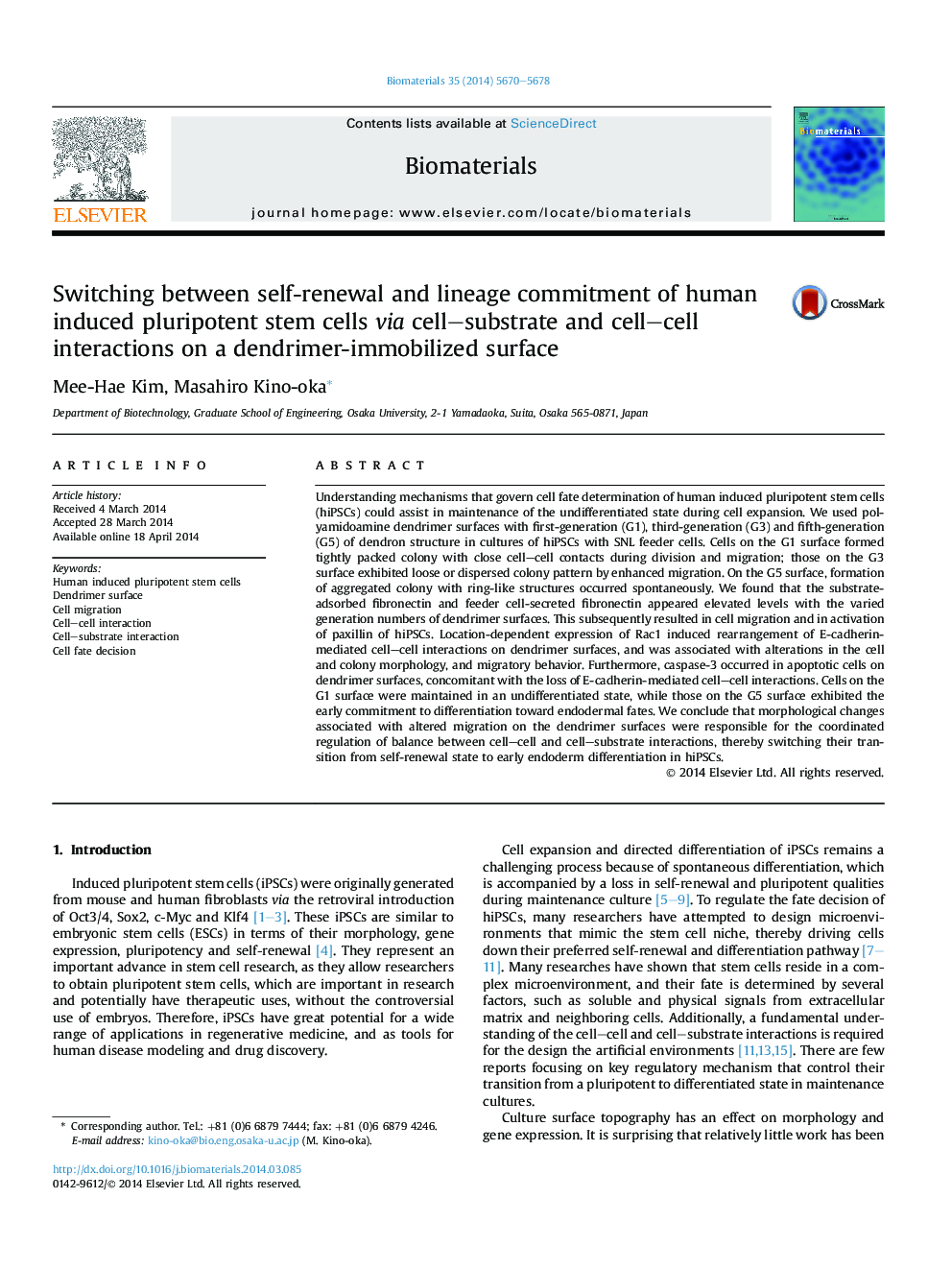| Article ID | Journal | Published Year | Pages | File Type |
|---|---|---|---|---|
| 10227708 | Biomaterials | 2014 | 9 Pages |
Abstract
Understanding mechanisms that govern cell fate determination of human induced pluripotent stem cells (hiPSCs) could assist in maintenance of the undifferentiated state during cell expansion. We used polyamidoamine dendrimer surfaces with first-generation (G1), third-generation (G3) and fifth-generation (G5) of dendron structure in cultures of hiPSCs with SNL feeder cells. Cells on the G1 surface formed tightly packed colony with close cell-cell contacts during division and migration; those on the G3 surface exhibited loose or dispersed colony pattern by enhanced migration. On the G5 surface, formation of aggregated colony with ring-like structures occurred spontaneously. We found that the substrate-adsorbed fibronectin and feeder cell-secreted fibronectin appeared elevated levels with the varied generation numbers of dendrimer surfaces. This subsequently resulted in cell migration and in activation of paxillin of hiPSCs. Location-dependent expression of Rac1 induced rearrangement of E-cadherin-mediated cell-cell interactions on dendrimer surfaces, and was associated with alterations in the cell and colony morphology, and migratory behavior. Furthermore, caspase-3 occurred in apoptotic cells on dendrimer surfaces, concomitant with the loss of E-cadherin-mediated cell-cell interactions. Cells on the G1 surface were maintained in an undifferentiated state, while those on the G5 surface exhibited the early commitment to differentiation toward endodermal fates. We conclude that morphological changes associated with altered migration on the dendrimer surfaces were responsible for the coordinated regulation of balance between cell-cell and cell-substrate interactions, thereby switching their transition from self-renewal state to early endoderm differentiation in hiPSCs.
Keywords
Related Topics
Physical Sciences and Engineering
Chemical Engineering
Bioengineering
Authors
Mee-Hae Kim, Masahiro Kino-oka,
